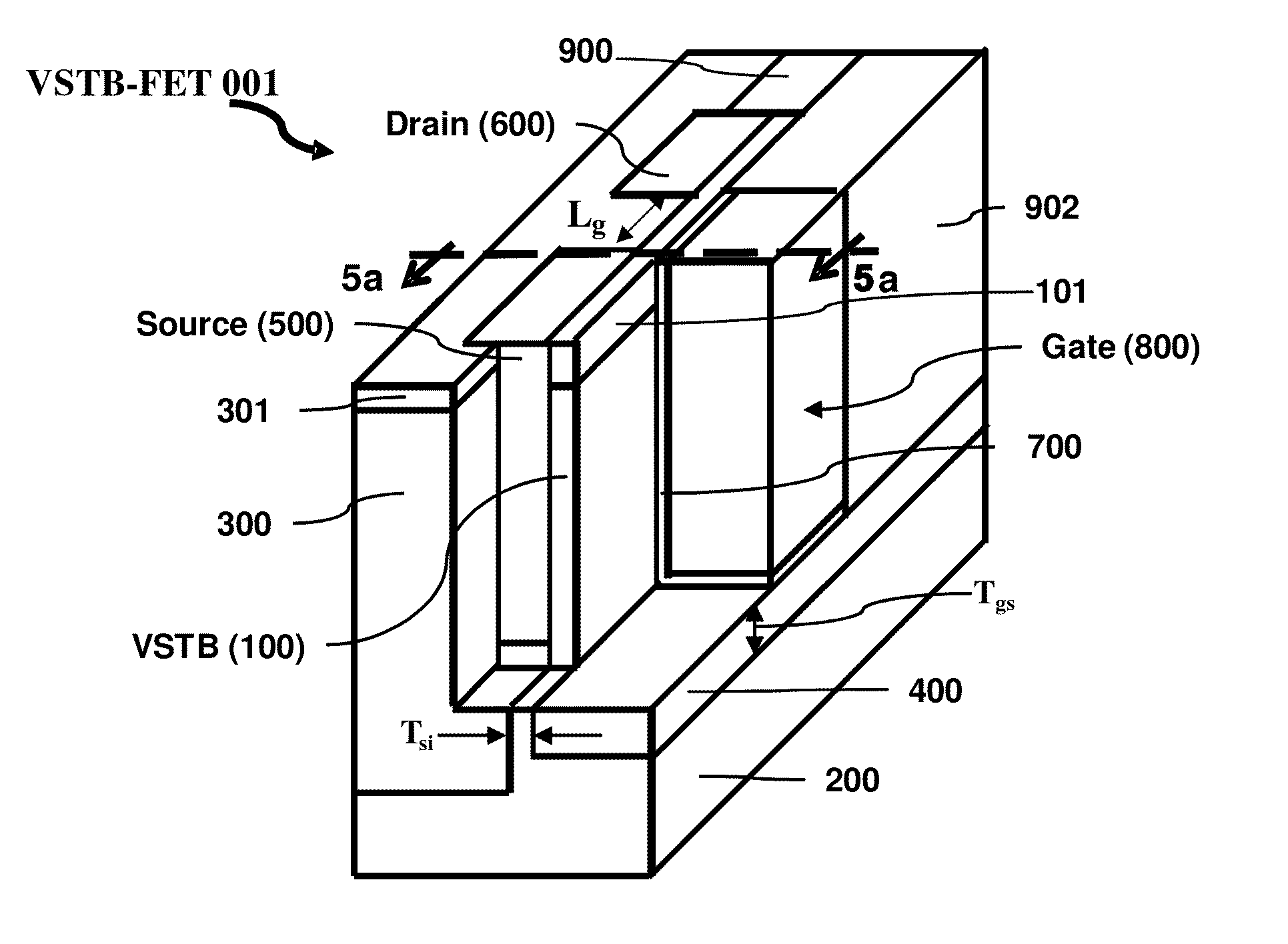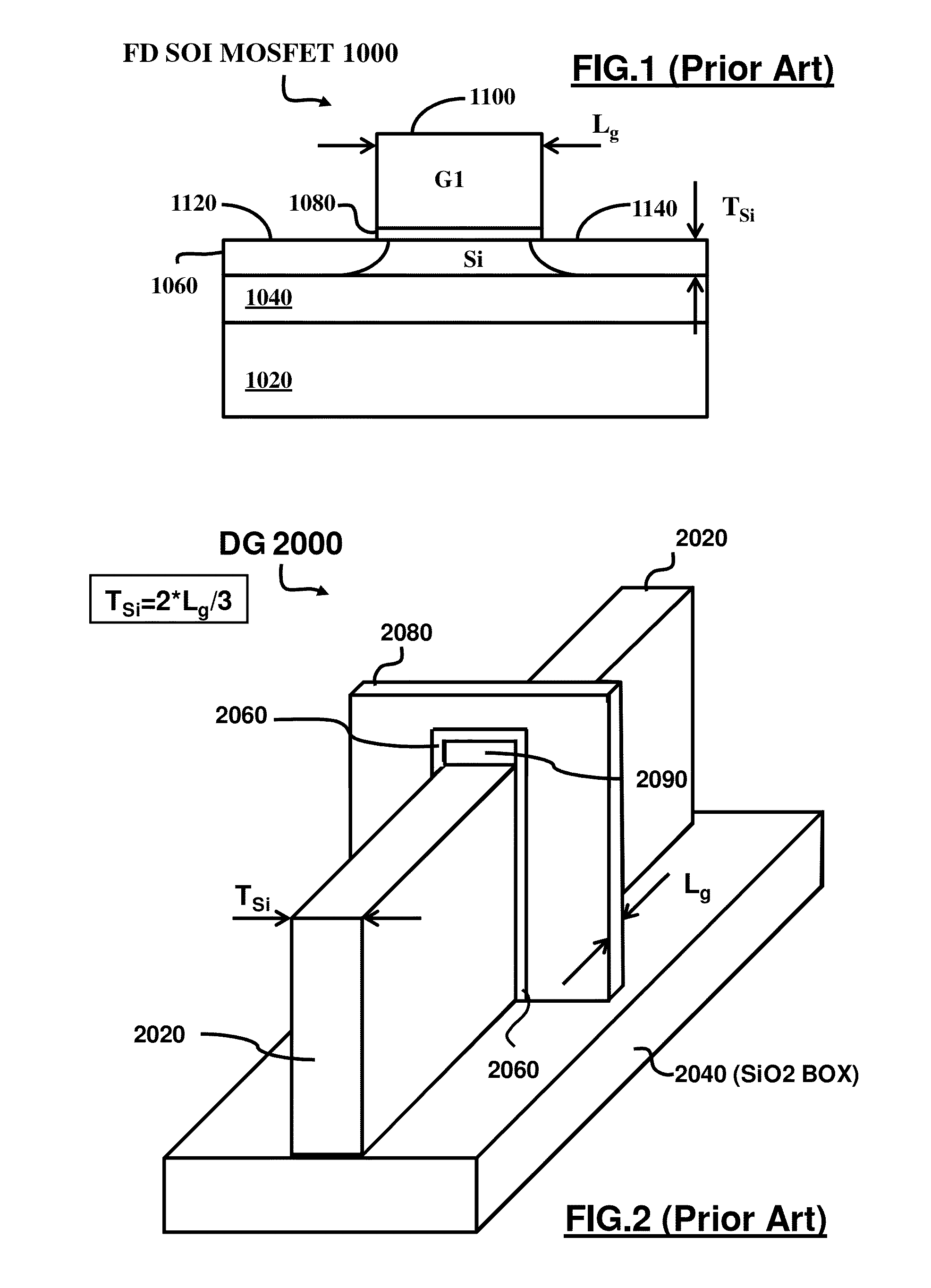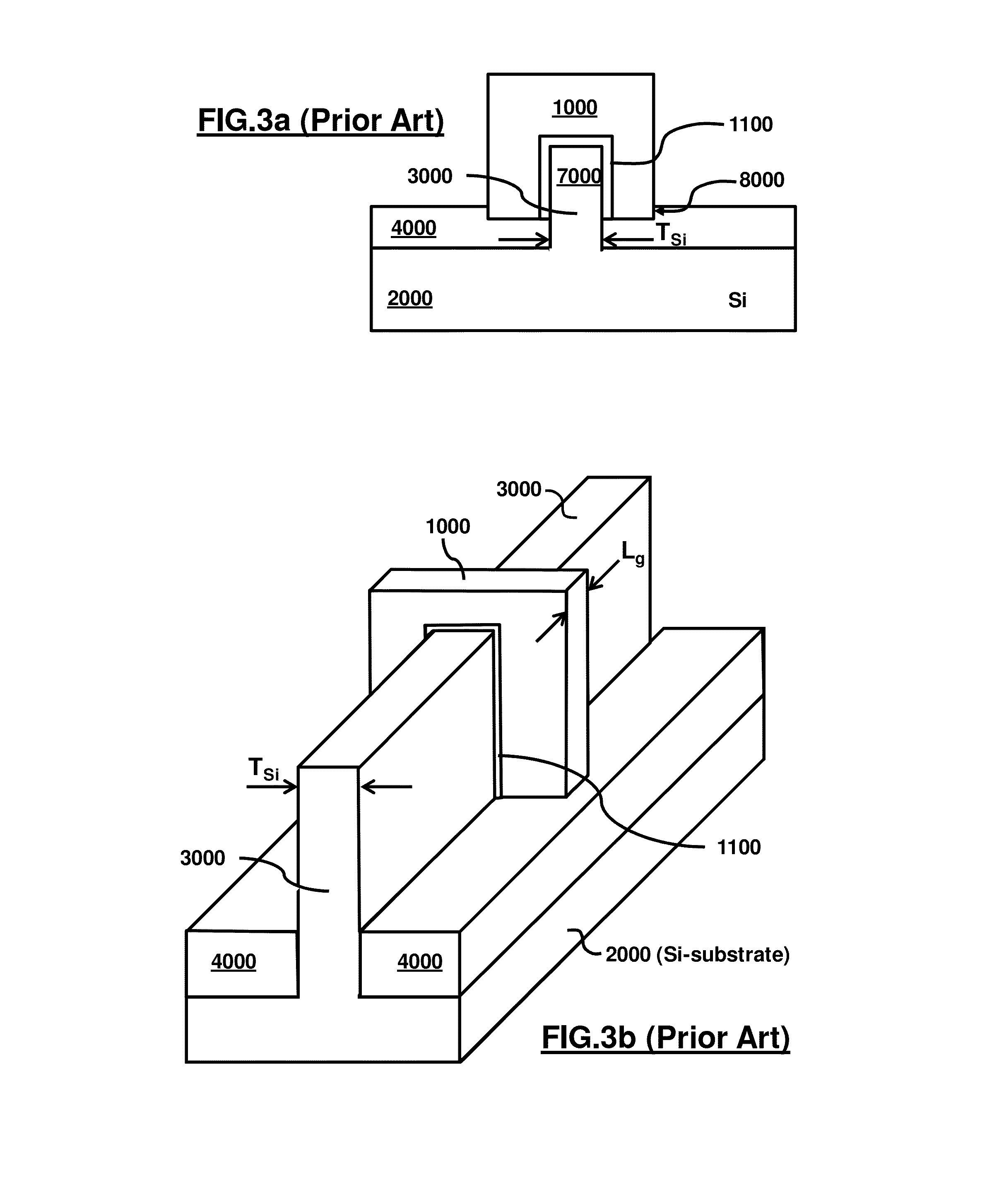Vertical Super-Thin Body Semiconductor on Dielectric Wall Devices and Methods of Their Fabrication
a dielectric wall and semiconductor technology, applied in semiconductor devices, semiconductor/solid-state device details, electrical apparatus, etc., can solve the problems of unmanufacturability of finfet on soi, inability to manufacture super-thin body on soi with a required uniformity across a 300 mm (or 450 mm in future), and the scaling of the latter concept is under scrupulous attention, etc., to achieve easy implementation, tight control of vstb body
- Summary
- Abstract
- Description
- Claims
- Application Information
AI Technical Summary
Benefits of technology
Problems solved by technology
Method used
Image
Examples
Embodiment Construction
[0092]The present invention is a novel vertical super-thin body (VSTB) field effect transistor (FET) structure (VSTB-FET) and its methods of fabrication. In the following description numerous specific details are set forth in order to provide a thorough understanding of the present invention. In other instances, well-known semiconductor process and manufacturing techniques have not been described in particular detail in order to not unnecessarily obscure the present invention.
[0093]In an embodiment of the present invention, the VSTB-FET is a semiconductor on bulk c-Si transistor. The VSTB-FET is ideal for use in fully depleted VSTB transistor applications where the body electrical connection to the wafer substrate is essential, as illustrated in FIG. 4, FIG. 5a, and FIG. 5b.
[0094]The present invention is a semiconductor device comprising a semiconducting low doped vertical super-thin body (VSTB) connected to a vertical wall of a dielectric body, such as the STI, having the connecti...
PUM
 Login to View More
Login to View More Abstract
Description
Claims
Application Information
 Login to View More
Login to View More - R&D
- Intellectual Property
- Life Sciences
- Materials
- Tech Scout
- Unparalleled Data Quality
- Higher Quality Content
- 60% Fewer Hallucinations
Browse by: Latest US Patents, China's latest patents, Technical Efficacy Thesaurus, Application Domain, Technology Topic, Popular Technical Reports.
© 2025 PatSnap. All rights reserved.Legal|Privacy policy|Modern Slavery Act Transparency Statement|Sitemap|About US| Contact US: help@patsnap.com



